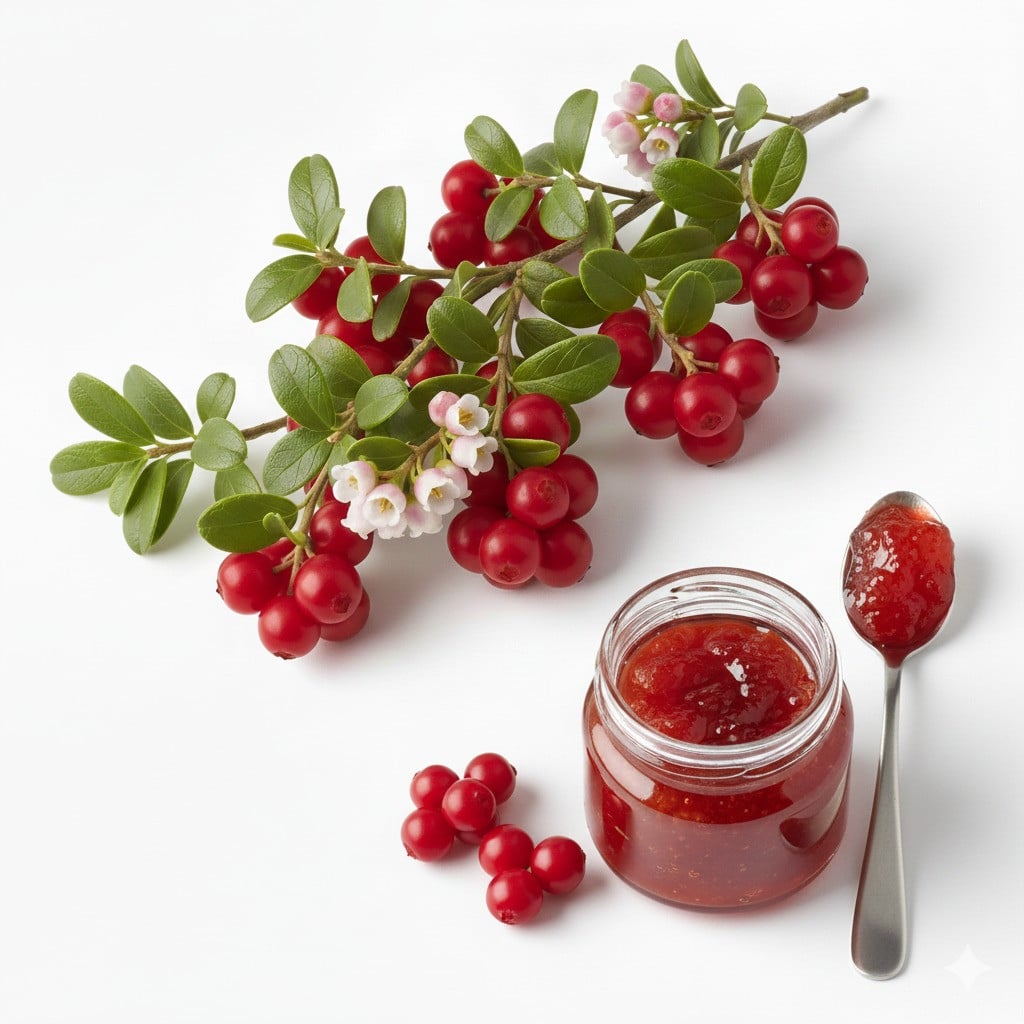Lingonberry / Partridgeberry / Mountain cranberry

Lingonberry / Partridgeberry / Mountain cranberry
Vaccinium vitis-idaea
Plant family
The Heath (Ericaceae)
Also known as
Cowberry
Season Overview
Planting
Harvest
Harvest
J
F
M
A
M
J
J
A
S
O
N
D
1ST YEAR
FOLLOWING YEARS
Details
Light requirement
Sunny
Water requirement
Moist
Soil
Light (sandy)
Nutrient requirement
Low
Plant distance
32 cm
Row spacing
32 cm
Seeding depth
15 cm
Instructions
Description
Cranberries (Vaccinium vitis-idaea), like blueberries and mossberries, belong to the heather family (Ericaceae). It is also called cranberry, cranberry, grantlberry or red bilberry. It occurs naturally on acid soils in bogs, heaths and forests. The plants grow between 10-30 cm tall. Grows ground-covering. Forms white-pink bell-shaped flowers in May-June, from which the light red fruits, about 0.5-1 cm in size, form in August and September. They can be eaten raw and have an aromatic, tart-sour taste. Cranberries differ from cranberries in their growth, and the berries of cranberries are slightly larger and lighter in color than those of cranberries. There are also ornamental varieties of cranberries, which taste quite sour, so cultivated cranberries should rather be grown for consumption.
Origin:
From Northern Europe to Siberia to Japan
Growing tips
Need acidic soil with a pH of 4-5, so mix in acidic compost or blueberry or rhododendron soil, or immediately dig a hole and fill it with fresh acidic soil. Too high pH leads to chlorosis (yellowing of the leaves) and the death of the plants. Soils rich in lime are also unsuitable. Can also be planted in a pot. Hardy to -22°C. A layer of mulch keeps the soil acidic longer and prevents evaporation. Remove weeds regularly, as the cranberry is weak in competition.
Companion Plants
Antagonistic Plants
No antagonistic plants
Diseases
No diseases
Pests
No pests